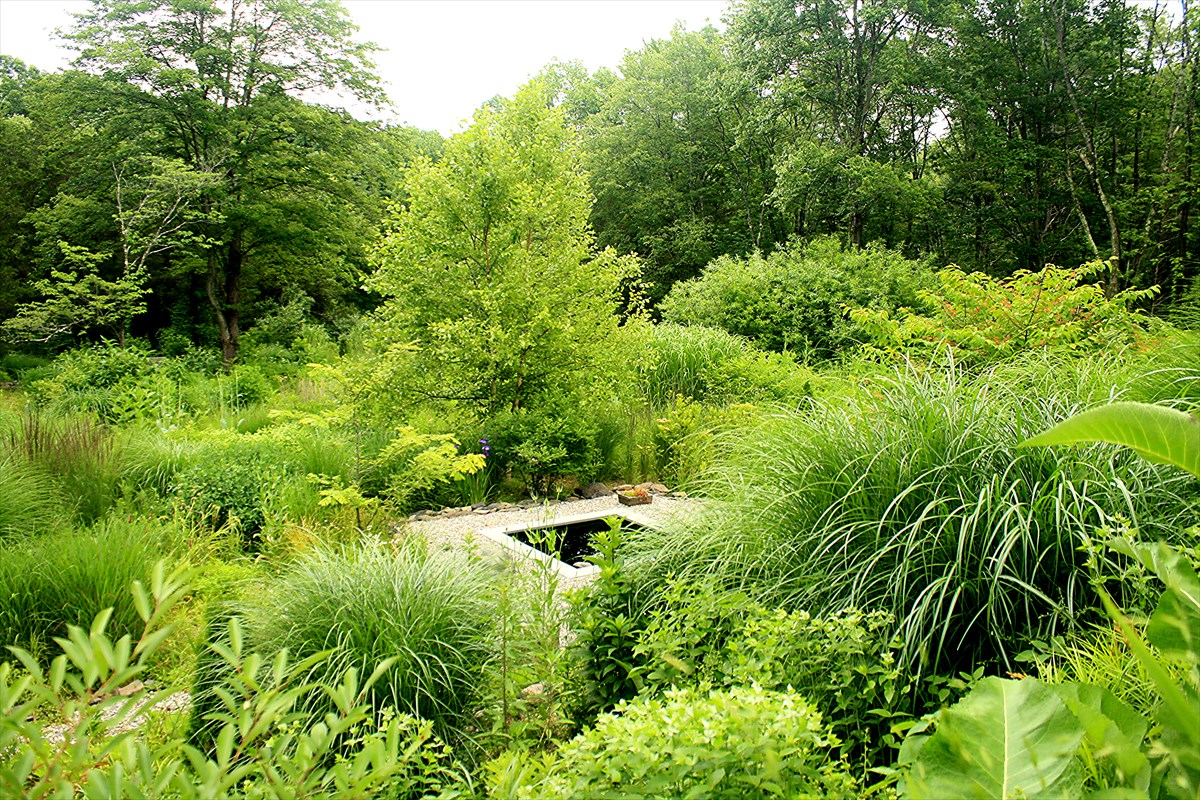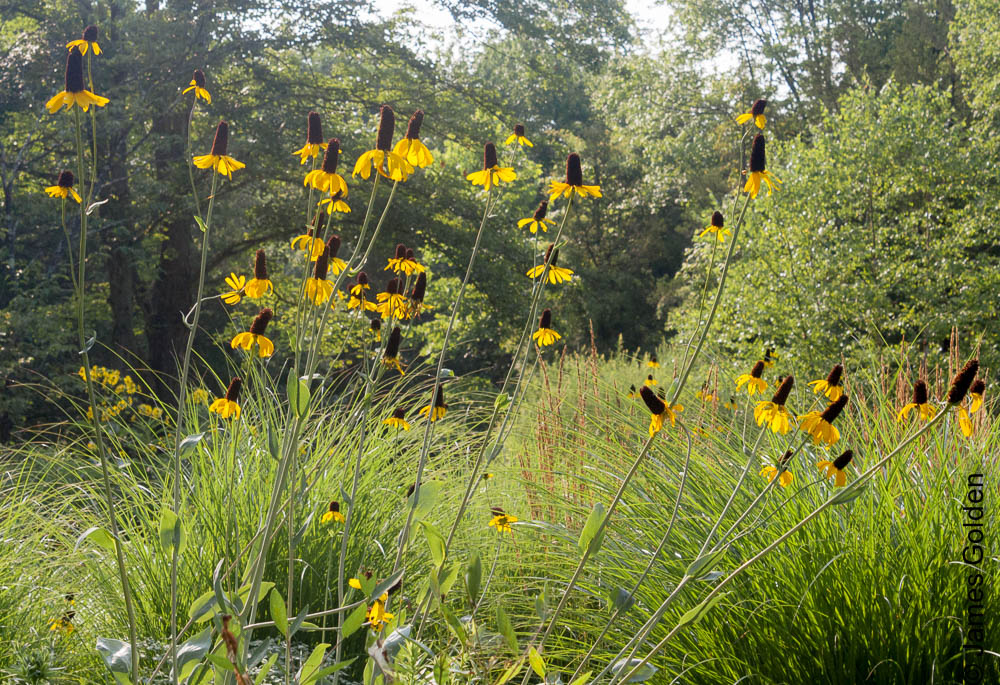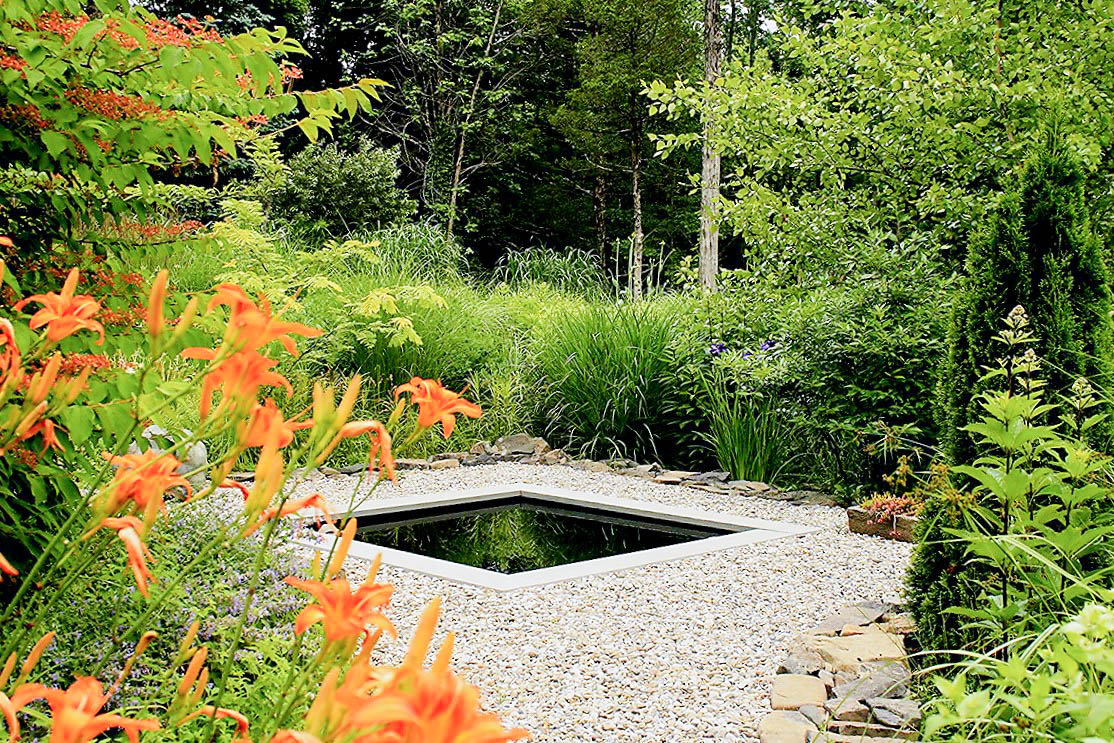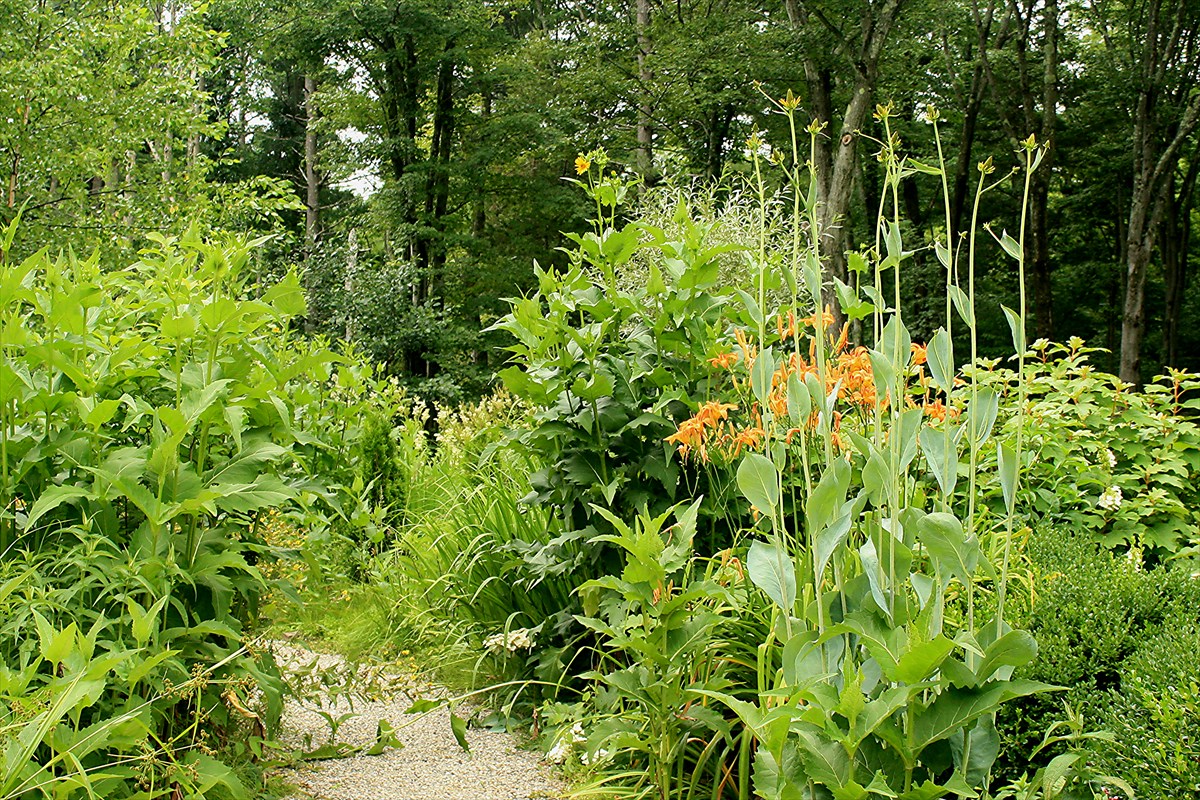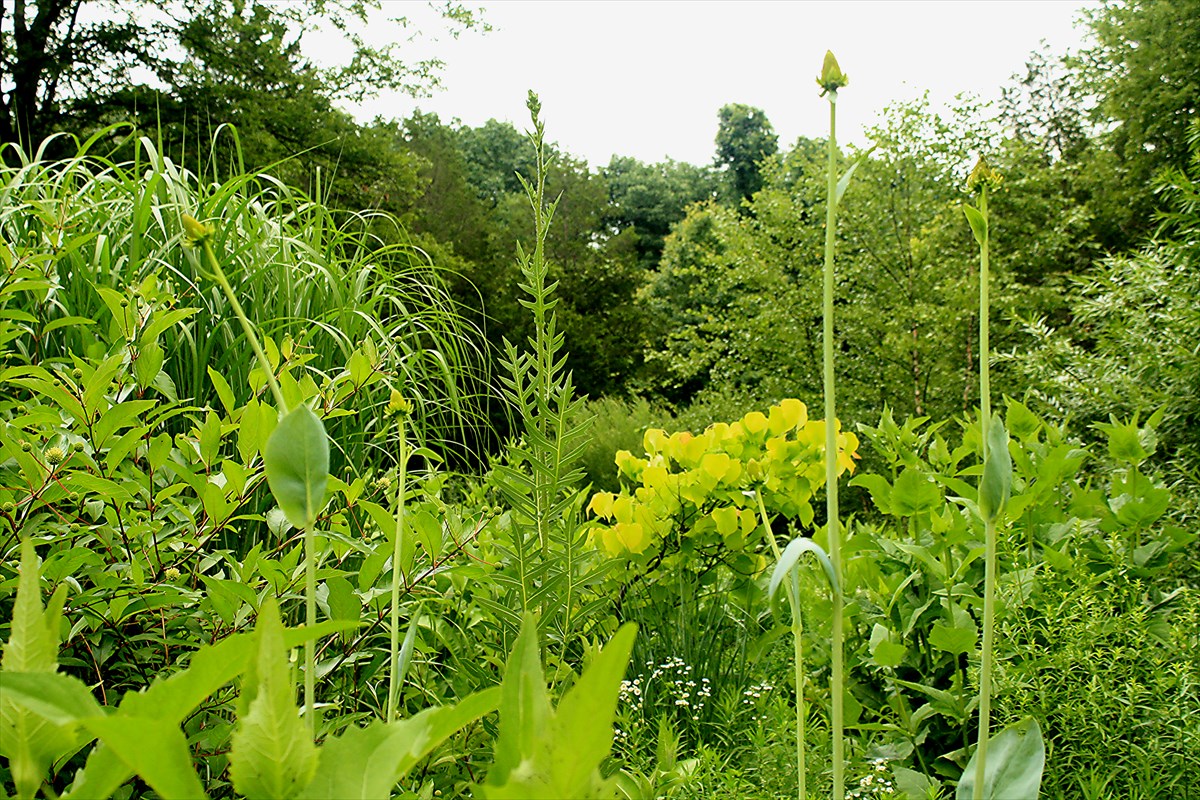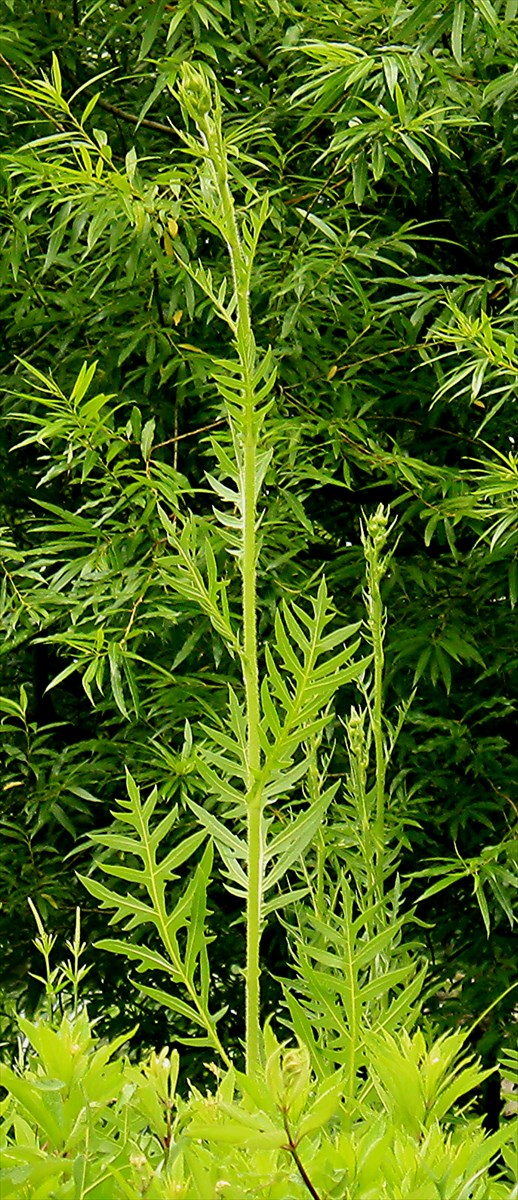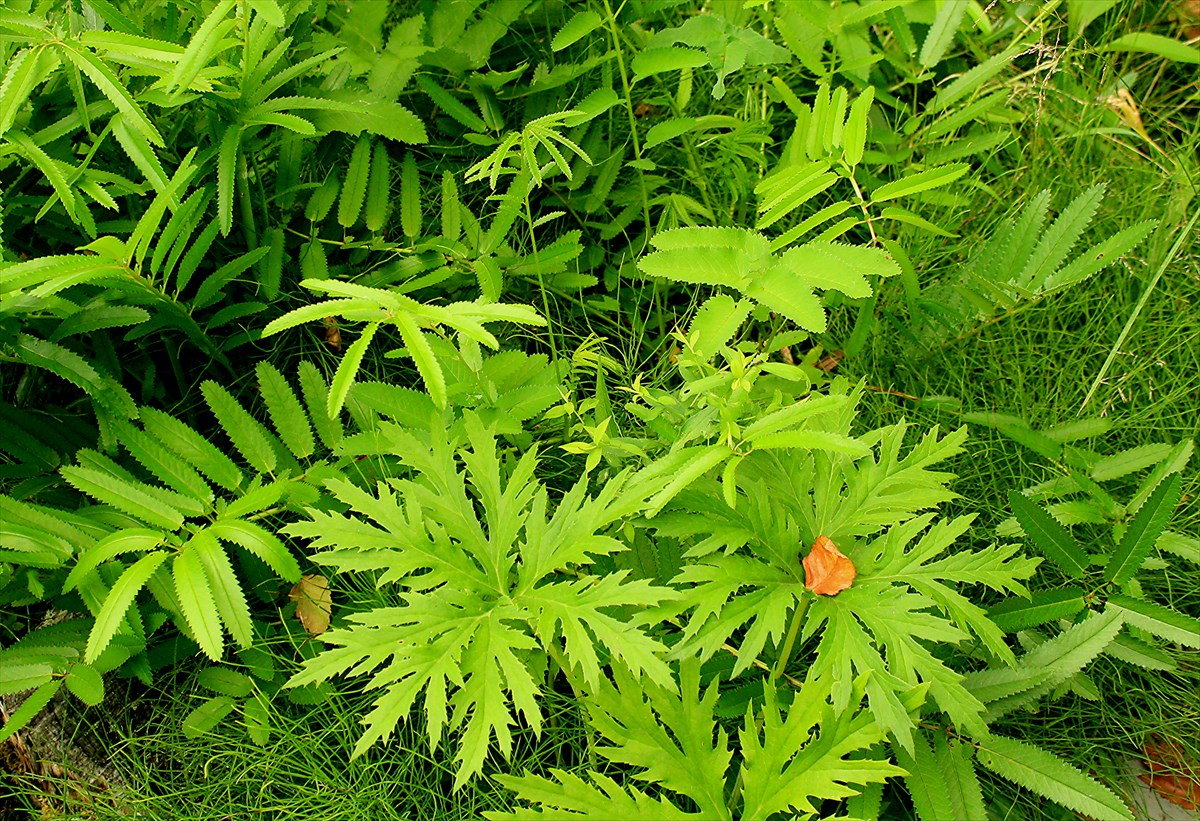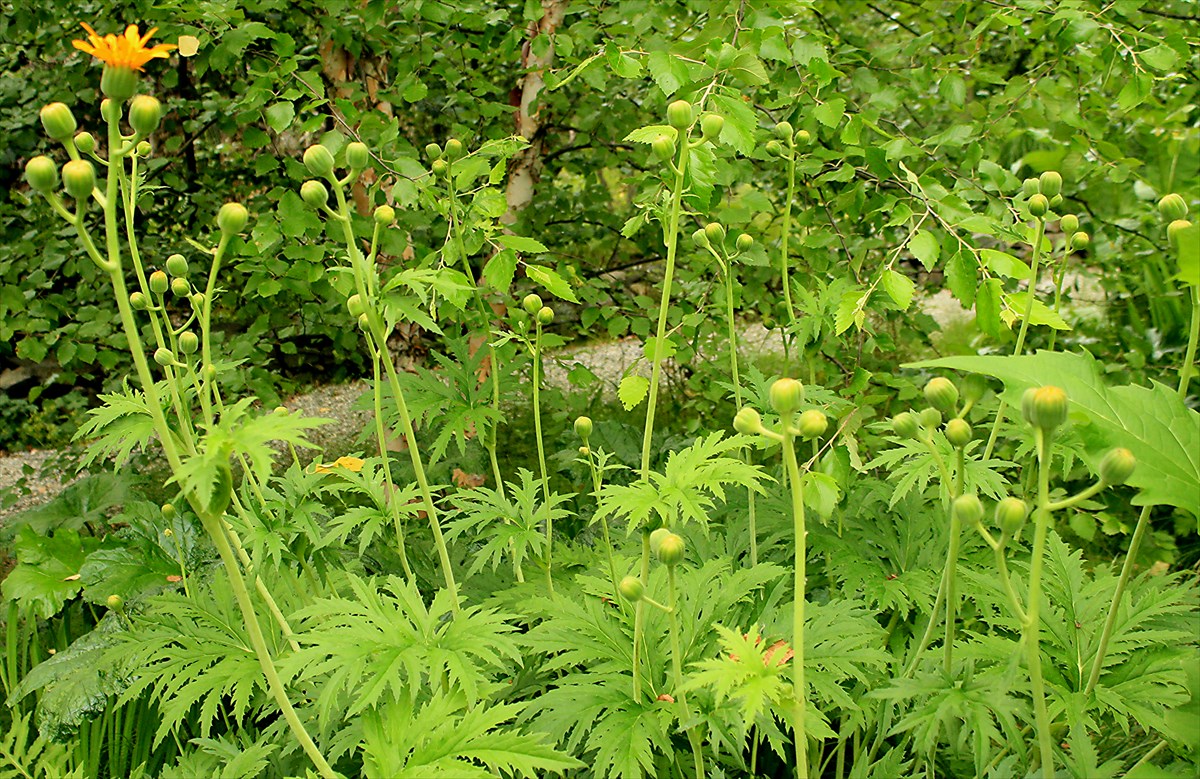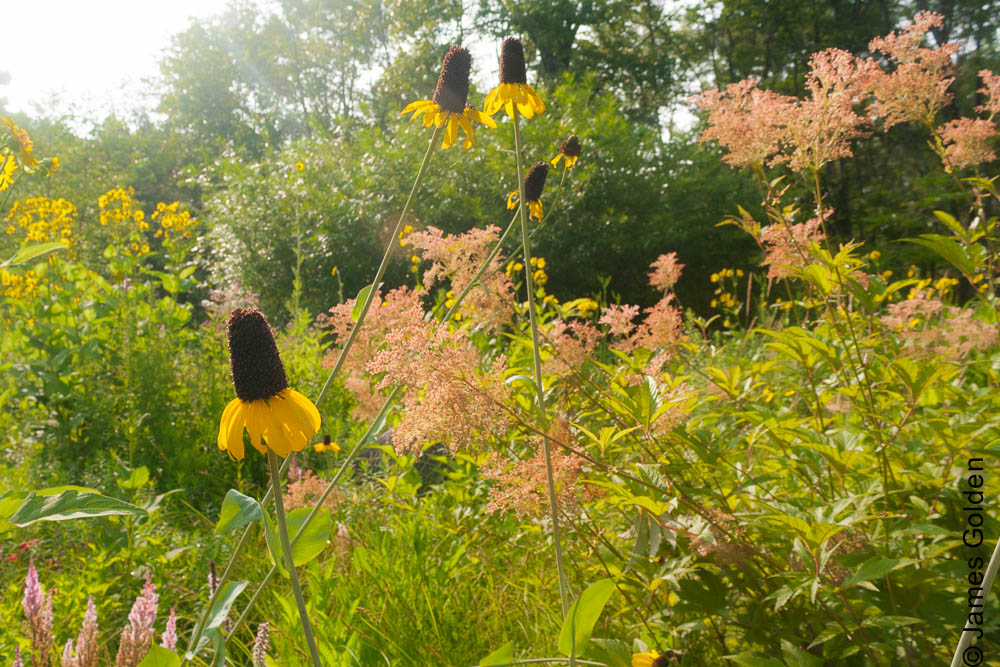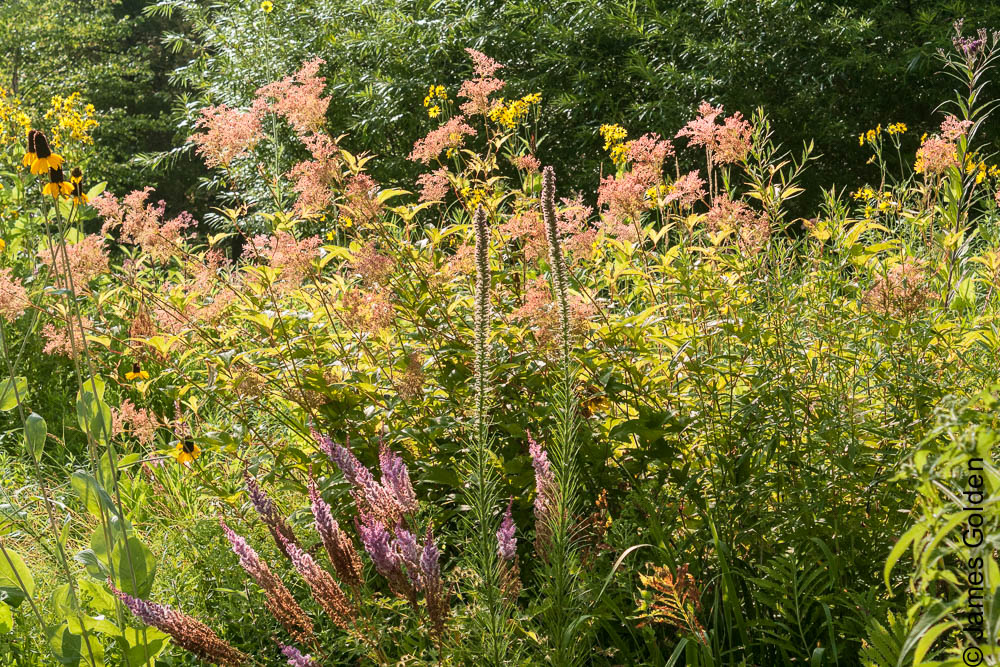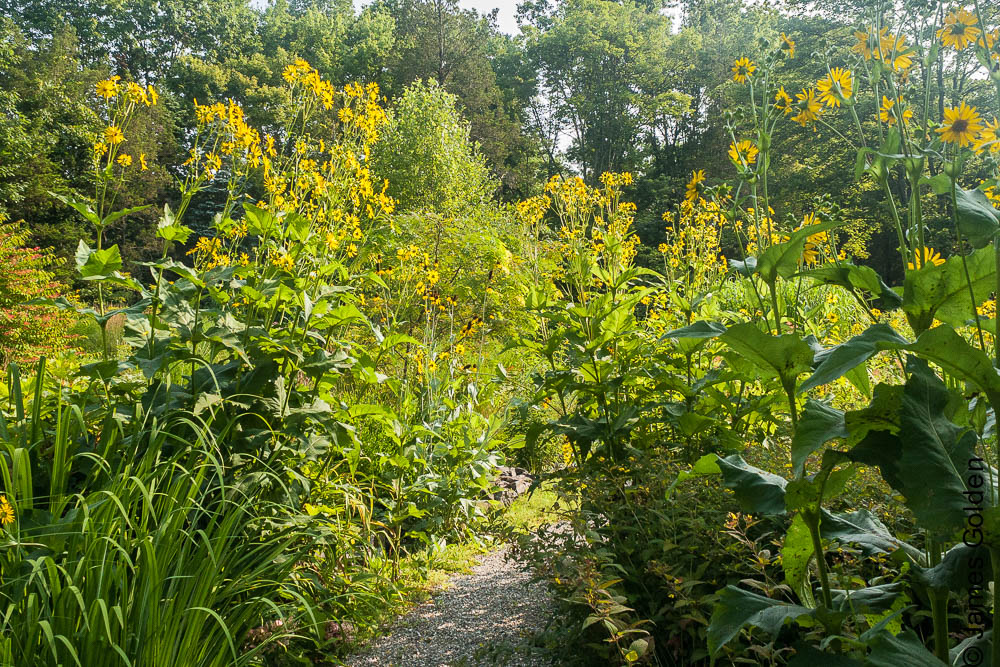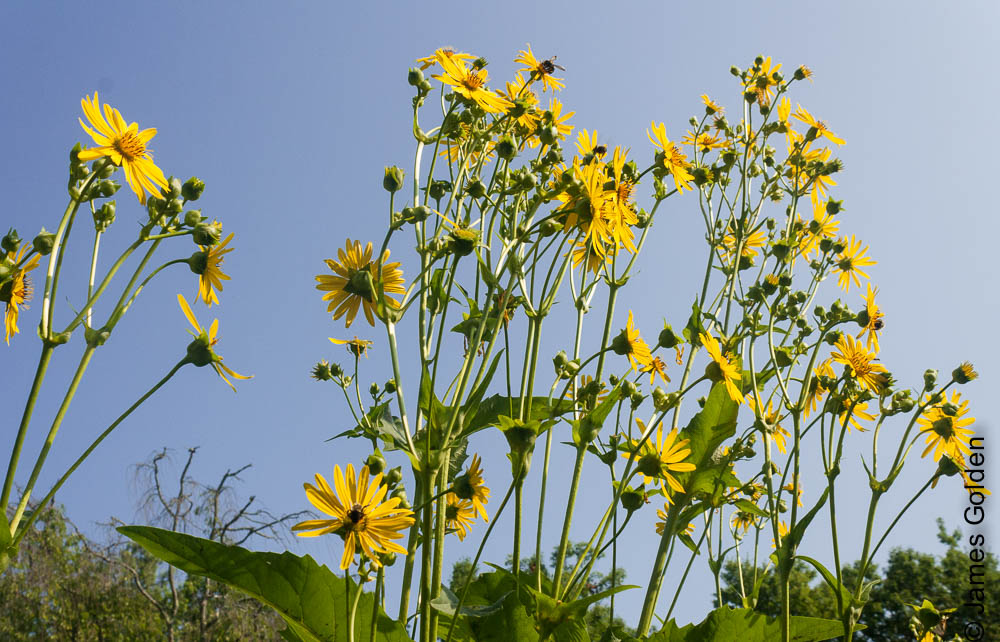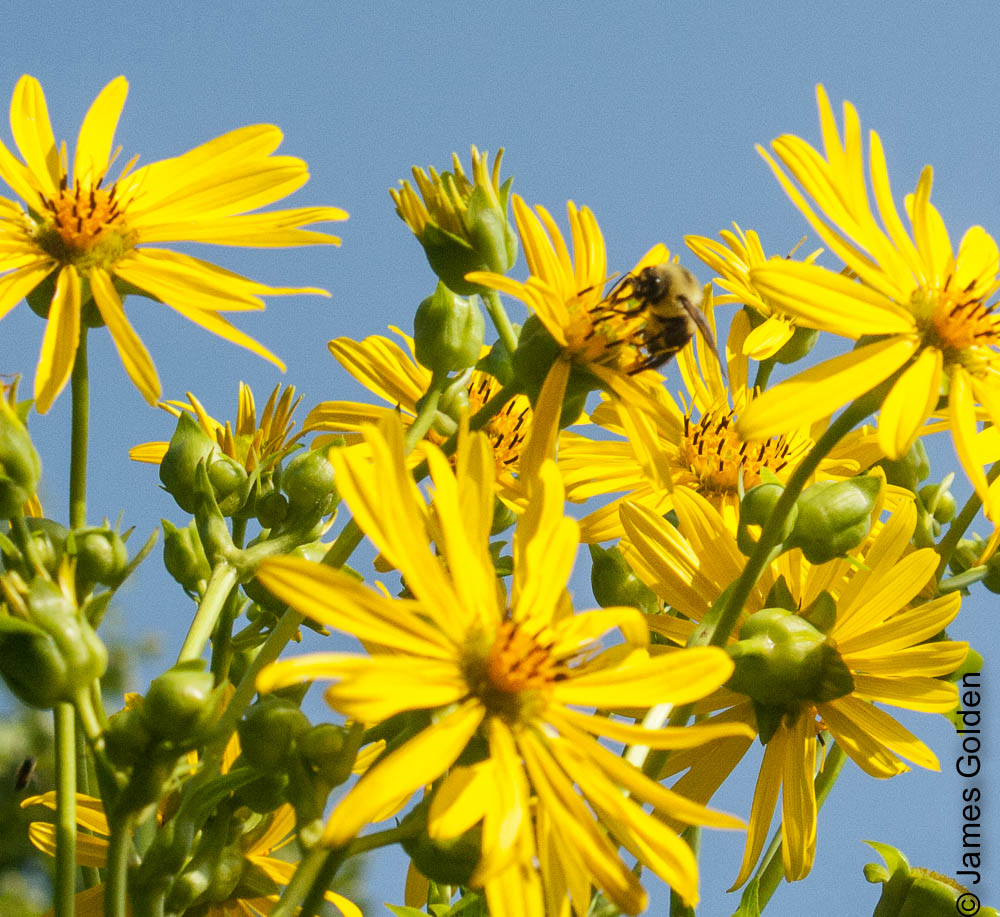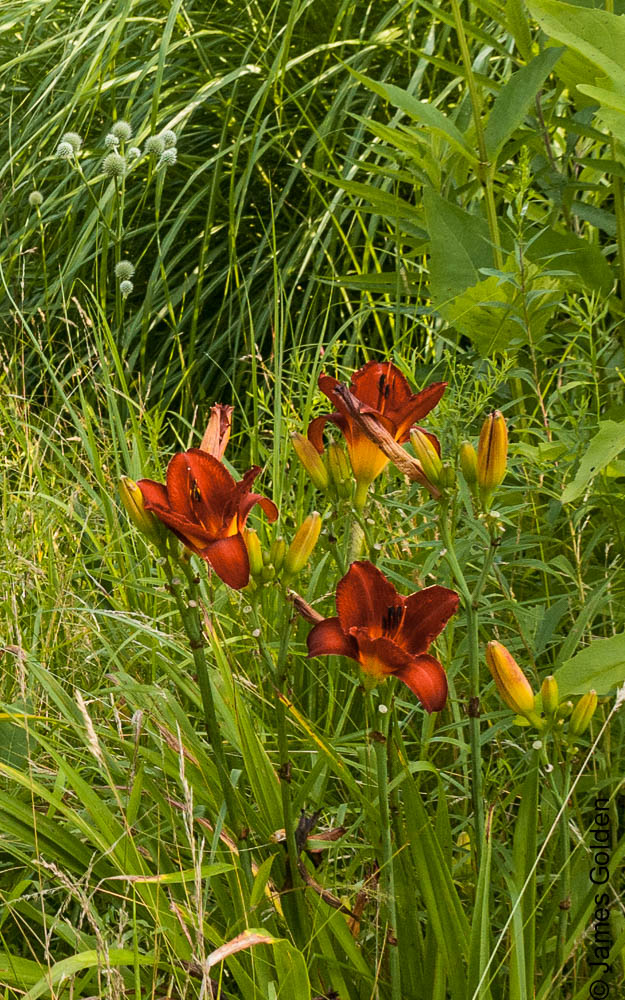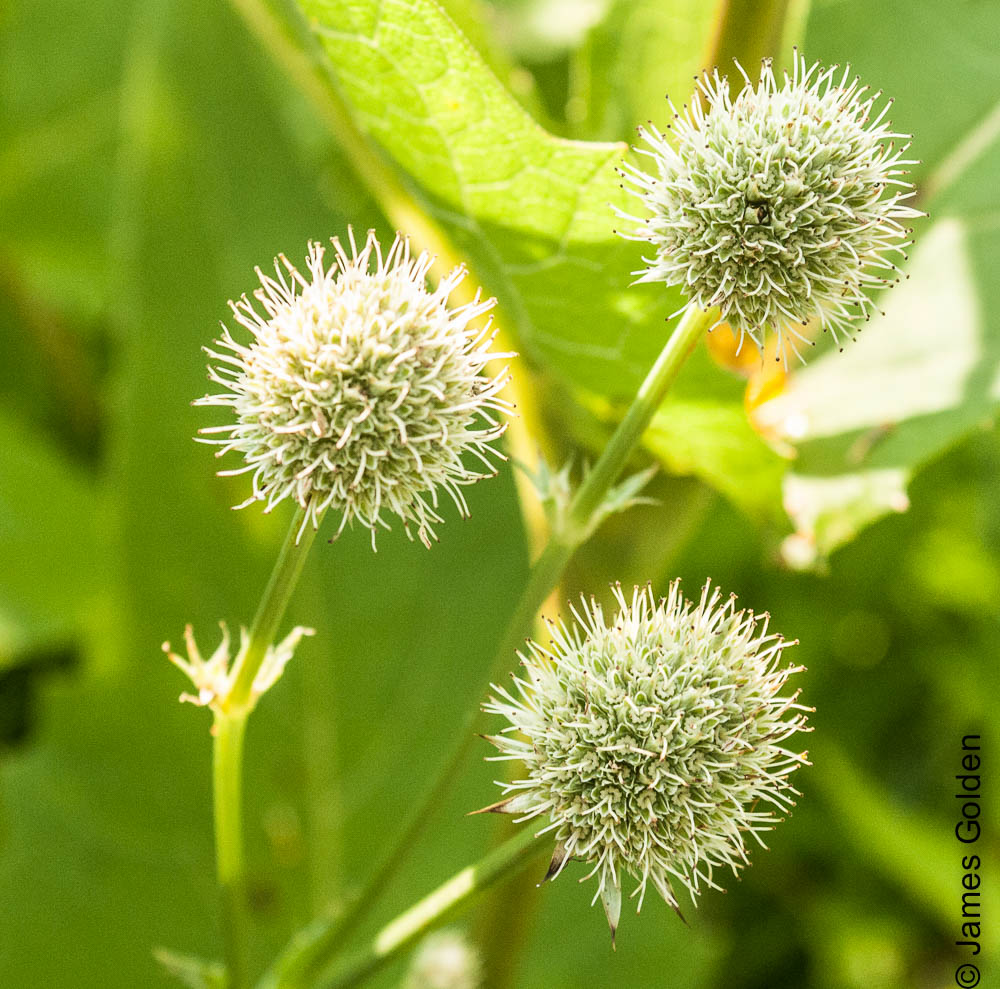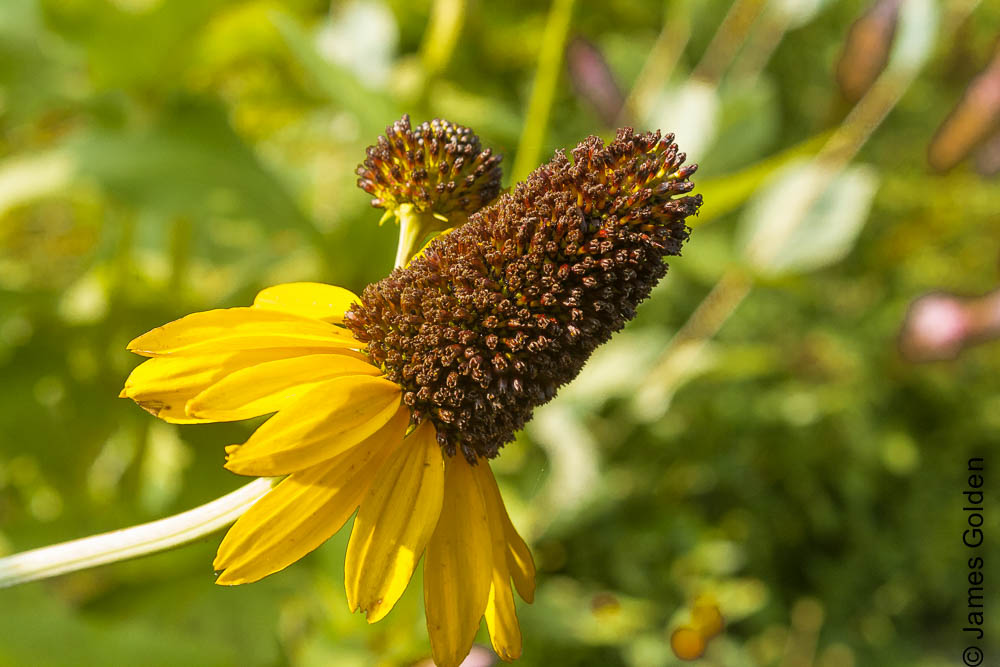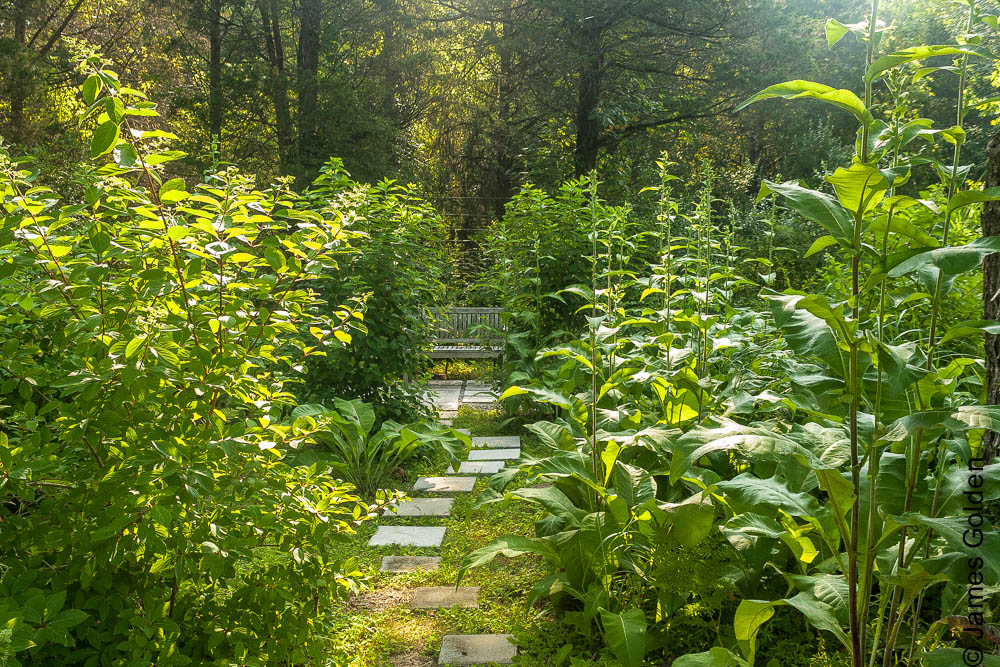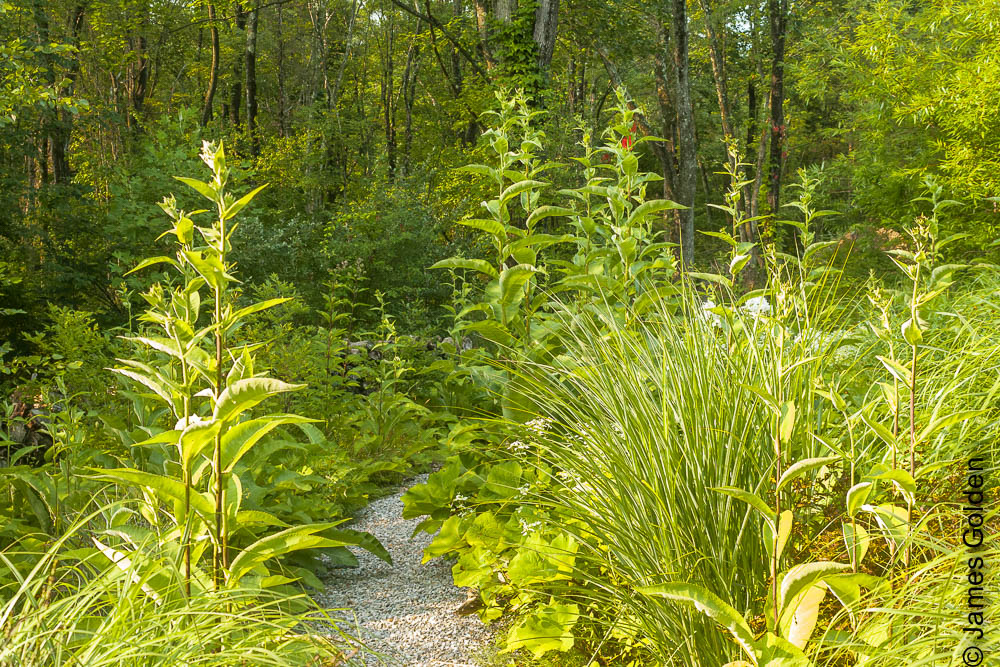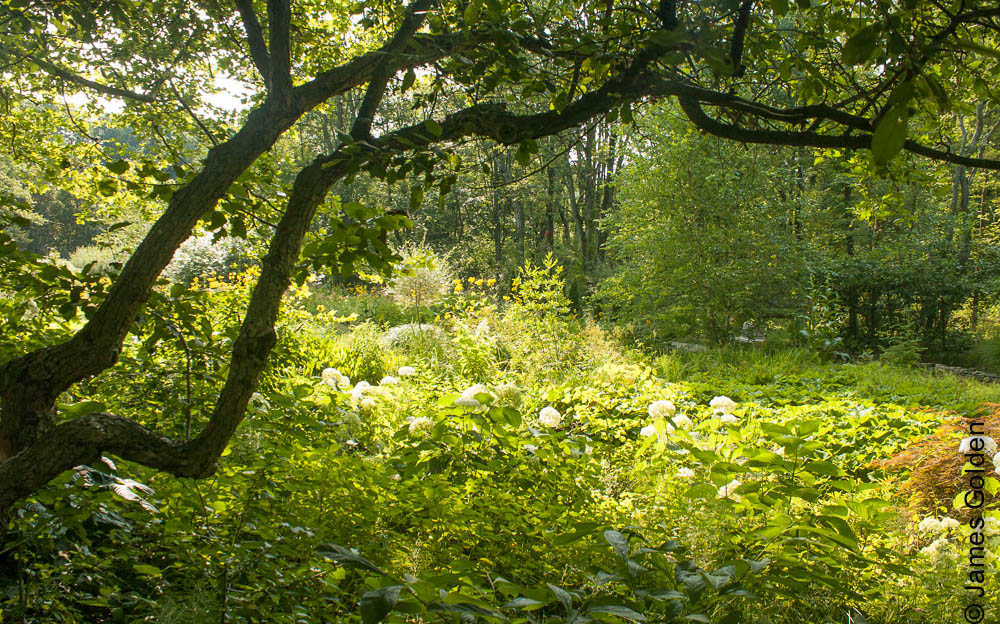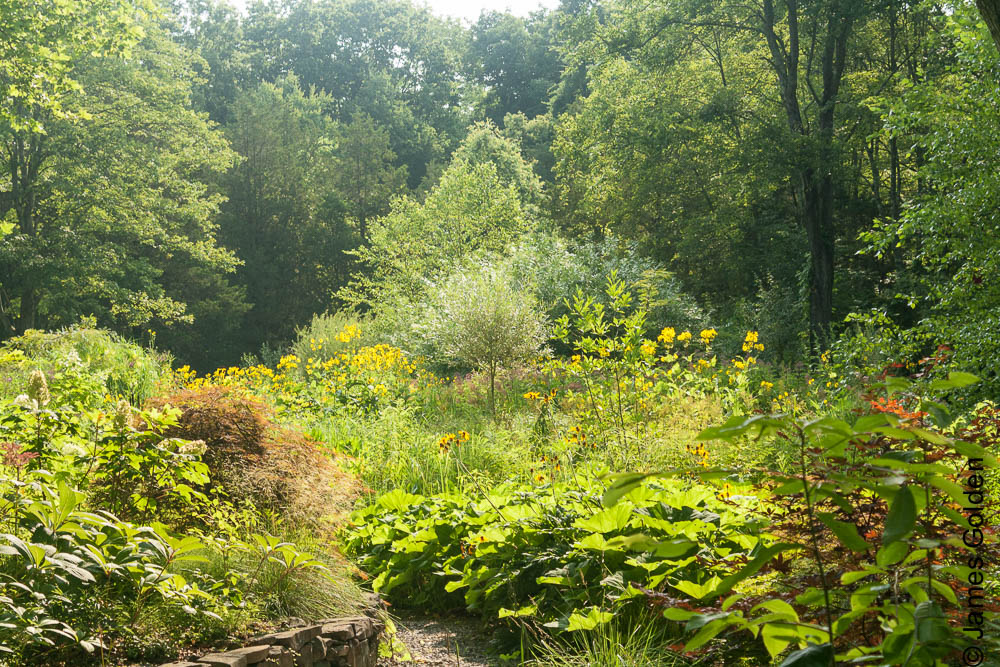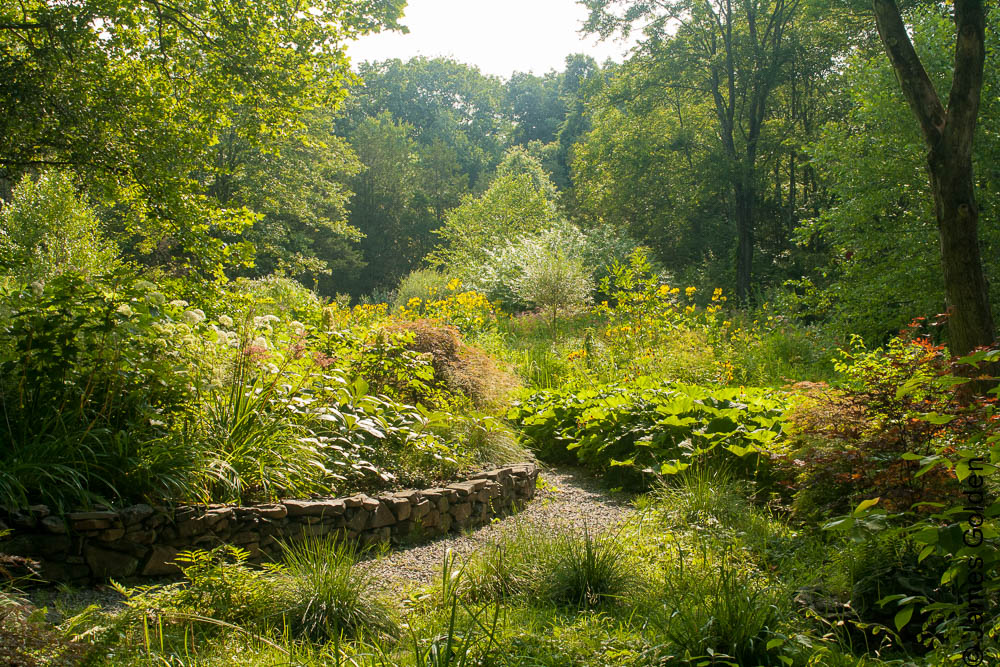What if a visitor arrives before the garden's up to snuff?
One of the few disadvantages of a prairie-style garden is the mostly vacant stare it gives you until June.I have a garden visitor coming in early May, when the garden has barely begun to turn green and most of the high summer's 12-foot behemoths are only 6 to 10 inches high. It certainly won't be in character, won't have the sheer mass, the atmosphere, none of the magic of the big garden of summer. I looked through photos I took of the garden on May 8 of last year, just to remind myself what to expect. (And, yes, to set expectations.)One can hope for a mysterious atmosphere, but the setting sun and cloudy sky are hard to deliver on cue.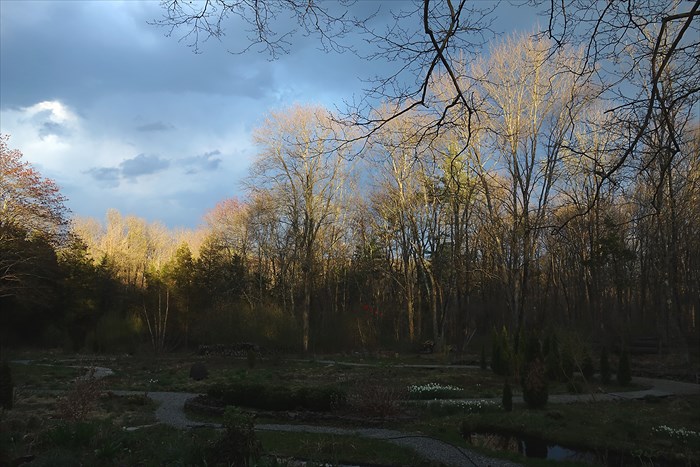 So a better approach might be to focus on process, on the experimental garden, on the emergence of the prairie planting--what Noel Kingsbury calls the "rabbit's-eye point of view"--to show how the plants grow in interwoven communities covering the ground and create a kind of dynamic stability. This is easy to see at this time of year, especially if you look close up, at or near ground level. Here, Petasites is in flower with native Equisetum arvense filling in the gaps. This is a hybrid called "X Dutch," which makes a dense, thick carpet only powerful emergents can penetrate.
So a better approach might be to focus on process, on the experimental garden, on the emergence of the prairie planting--what Noel Kingsbury calls the "rabbit's-eye point of view"--to show how the plants grow in interwoven communities covering the ground and create a kind of dynamic stability. This is easy to see at this time of year, especially if you look close up, at or near ground level. Here, Petasites is in flower with native Equisetum arvense filling in the gaps. This is a hybrid called "X Dutch," which makes a dense, thick carpet only powerful emergents can penetrate.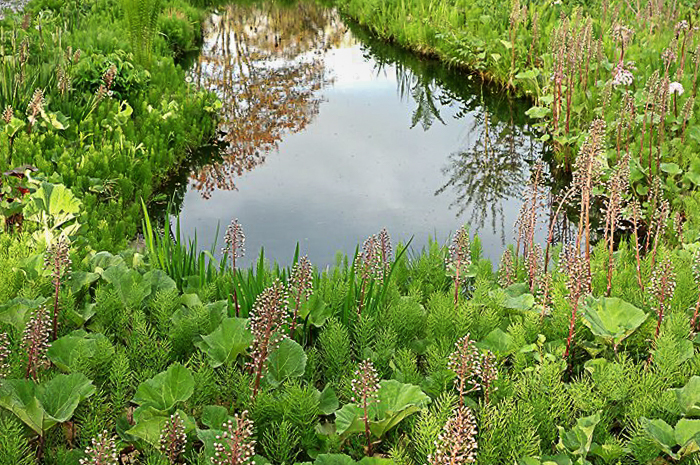 The pond edge is one of the few happening things now, an intriguing mixture of emerging forms. Camassia can pierce the ground layer, as can Matteuccia struthiopteris. Behind them are several mounds of Sanguisorba canadensis, which vigorously grows up through the mess later in the season. (I think of mess as a positive term. My gardening process is a series of interventions to control mess, refine line and legibility, sculpt mass from mess.)
The pond edge is one of the few happening things now, an intriguing mixture of emerging forms. Camassia can pierce the ground layer, as can Matteuccia struthiopteris. Behind them are several mounds of Sanguisorba canadensis, which vigorously grows up through the mess later in the season. (I think of mess as a positive term. My gardening process is a series of interventions to control mess, refine line and legibility, sculpt mass from mess.)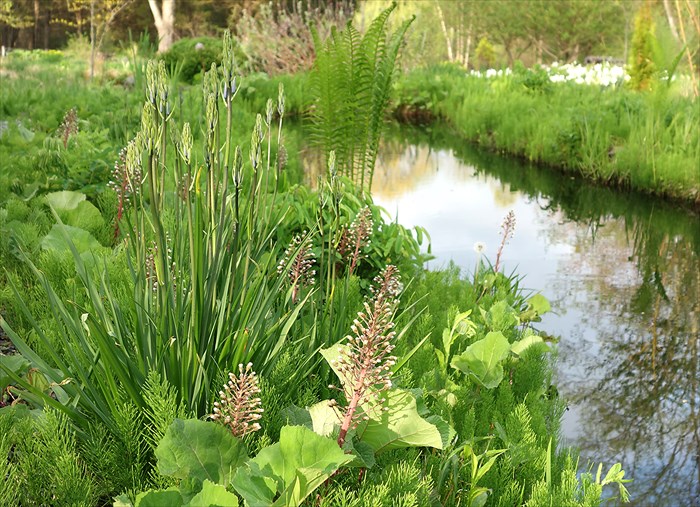 At the other end of the pond, Darmera peltata is in flower. The Japanese maples add a bit of red in the distance. Equisetum carpets the ground; I've grown quite fond of its ancient geometric structure, and its ability to cover the ground without inhibiting the growth of other plants. It gives a pleasant green finish to everything--more or less my "lawn"--at least in this part of the garden, even carpeting the bank, where Hydrangea arborescens and other shrubs will be visible in a few more weeks. (It's ubiquitous; I do have to pull it out of the gravel path.)
At the other end of the pond, Darmera peltata is in flower. The Japanese maples add a bit of red in the distance. Equisetum carpets the ground; I've grown quite fond of its ancient geometric structure, and its ability to cover the ground without inhibiting the growth of other plants. It gives a pleasant green finish to everything--more or less my "lawn"--at least in this part of the garden, even carpeting the bank, where Hydrangea arborescens and other shrubs will be visible in a few more weeks. (It's ubiquitous; I do have to pull it out of the gravel path.)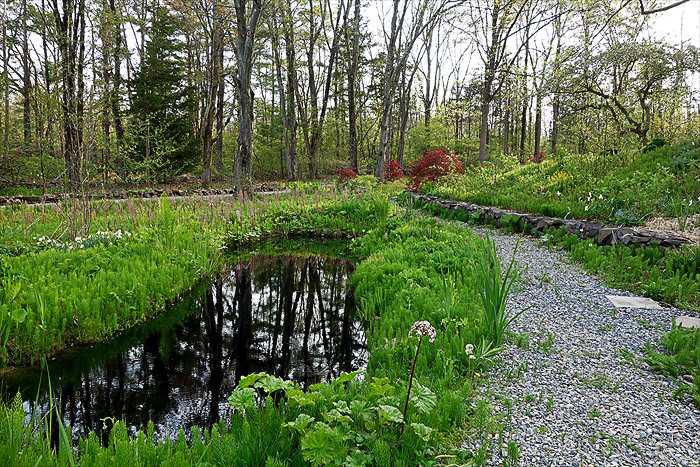
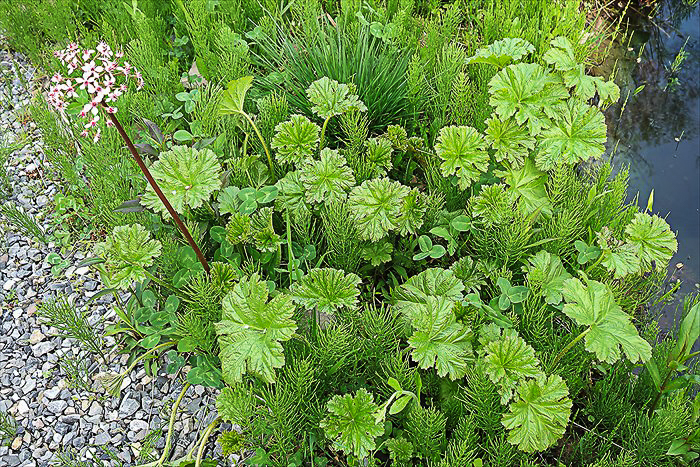 The boundary trees are especially beautiful in very early spring, giving a sense of height and openness. They define the top layer of an increasingly layered garden, as the season advances, and the middle layers fill in.
The boundary trees are especially beautiful in very early spring, giving a sense of height and openness. They define the top layer of an increasingly layered garden, as the season advances, and the middle layers fill in.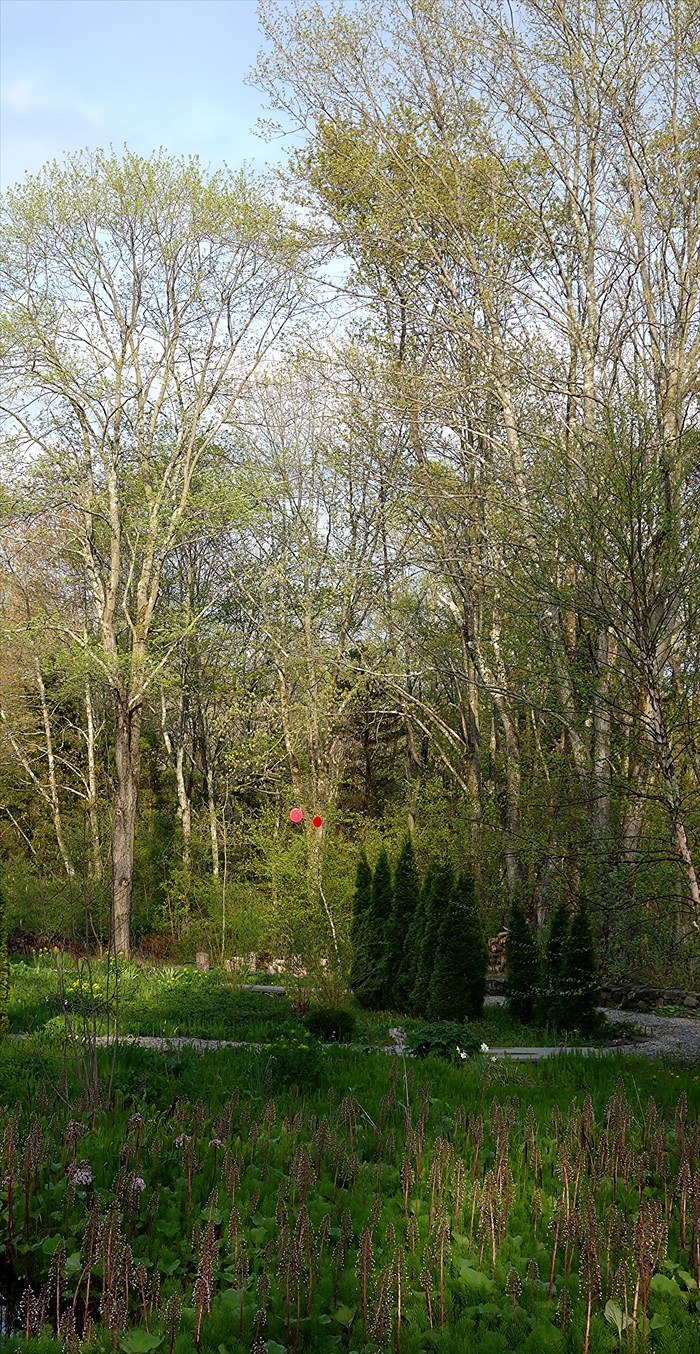 The bank up to the house and the area below, which lead to a small reflecting pool in the distance, will be a mass of swirling grassy mounds in mid-June. But now, after the cutting and burning, much of the detritus of winter remains though it will soon be hidden under mounds of Miscanthus, and begin to decompose and add to the organic matter in the highly mineral clay soil.
The bank up to the house and the area below, which lead to a small reflecting pool in the distance, will be a mass of swirling grassy mounds in mid-June. But now, after the cutting and burning, much of the detritus of winter remains though it will soon be hidden under mounds of Miscanthus, and begin to decompose and add to the organic matter in the highly mineral clay soil.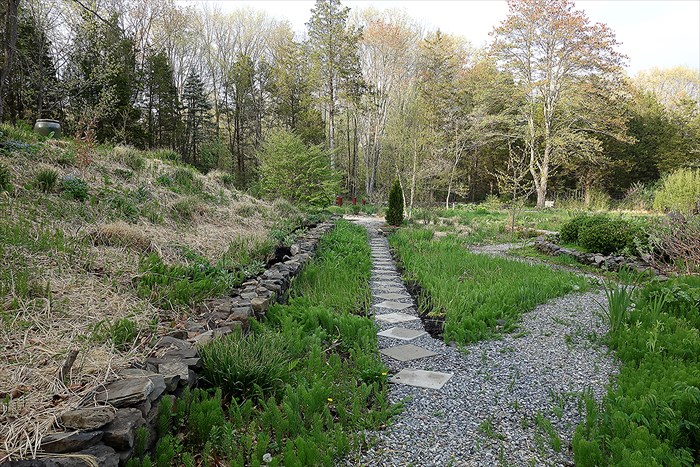 Several communities of competitive plants are on the move in the center of the garden. Two large colonies of Filipendula rubra 'Venusta' are visible on the left and right, Lysimachia ciliata 'Firecracker' has held its own wine-red space for almost 9 years. The spear-shaped leaves are Iris pseudacorus, which I have to pull out every few years, and move to a wet seep in the woodland edge. Several colonies of Joe Pye Weed are here too, but it's very late to emerge, as are other still invisible plants--Aster laevis 'Blue Bird', Sanguisorbas, Aster tartaricus 'Jin Dai', Liatris spicata, Inula racemosa 'Sonnenspeer', many Silphium perfoliatum, even a few daylilies for surprise color.
Several communities of competitive plants are on the move in the center of the garden. Two large colonies of Filipendula rubra 'Venusta' are visible on the left and right, Lysimachia ciliata 'Firecracker' has held its own wine-red space for almost 9 years. The spear-shaped leaves are Iris pseudacorus, which I have to pull out every few years, and move to a wet seep in the woodland edge. Several colonies of Joe Pye Weed are here too, but it's very late to emerge, as are other still invisible plants--Aster laevis 'Blue Bird', Sanguisorbas, Aster tartaricus 'Jin Dai', Liatris spicata, Inula racemosa 'Sonnenspeer', many Silphium perfoliatum, even a few daylilies for surprise color.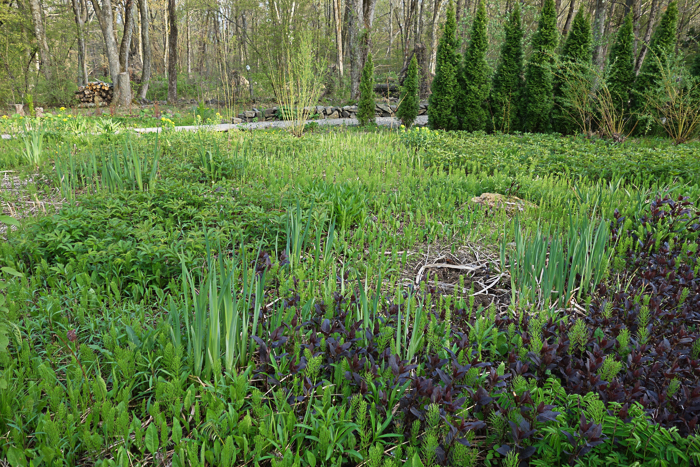 You can see the close growth allows for little weediness. As a continuing experiment, I broadcast seed each year, sort of like throwing the dice, to see what might emerge and find a place to its liking. I have high hopes for two ounces of dust-like seed of Bottle gentian (Gentiana andrewsii) I spread about a couple of months back.
You can see the close growth allows for little weediness. As a continuing experiment, I broadcast seed each year, sort of like throwing the dice, to see what might emerge and find a place to its liking. I have high hopes for two ounces of dust-like seed of Bottle gentian (Gentiana andrewsii) I spread about a couple of months back.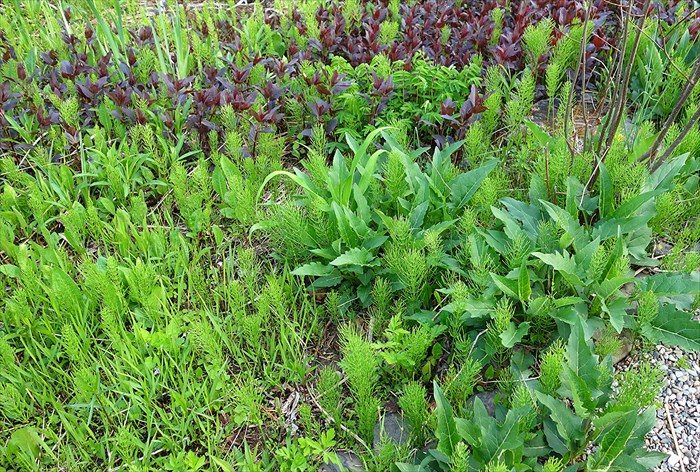 Below, an unexpected mixture of Filipendula on the left, Astilbe taquetii 'Purple Lance' at lower left, native Sensitive fern (Onoclea sensibilis) interweaving among everything, Sedum 'Herbstfreude', Iris versicolor, Equisetum arvense, of course, even an Inula racemosa 'Sonnenspeer' seedling, which I later pulled out. Though all of uniform height now, this will become a multilayered display by mid-summer.
Below, an unexpected mixture of Filipendula on the left, Astilbe taquetii 'Purple Lance' at lower left, native Sensitive fern (Onoclea sensibilis) interweaving among everything, Sedum 'Herbstfreude', Iris versicolor, Equisetum arvense, of course, even an Inula racemosa 'Sonnenspeer' seedling, which I later pulled out. Though all of uniform height now, this will become a multilayered display by mid-summer.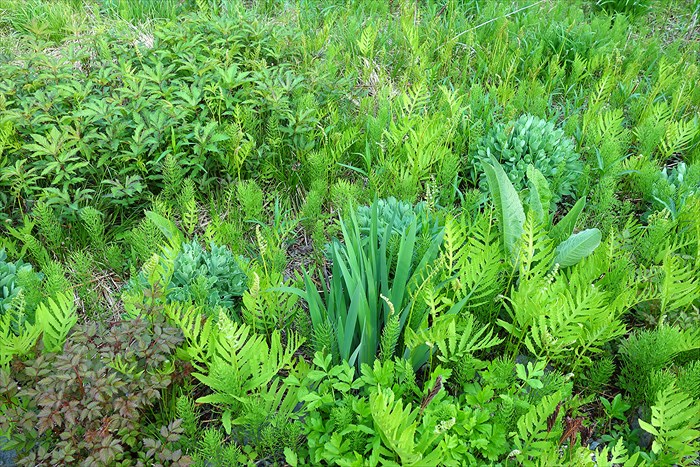 Groundcover is essential to maintaining control in this garden. Here Golden groundsel (Packera aurea) meets Sweet woodruff (Galium odoratum), Siberian bugloss (Brunnera macrophylla), and Stinking hellebore (Helleborus foetidus).
Groundcover is essential to maintaining control in this garden. Here Golden groundsel (Packera aurea) meets Sweet woodruff (Galium odoratum), Siberian bugloss (Brunnera macrophylla), and Stinking hellebore (Helleborus foetidus).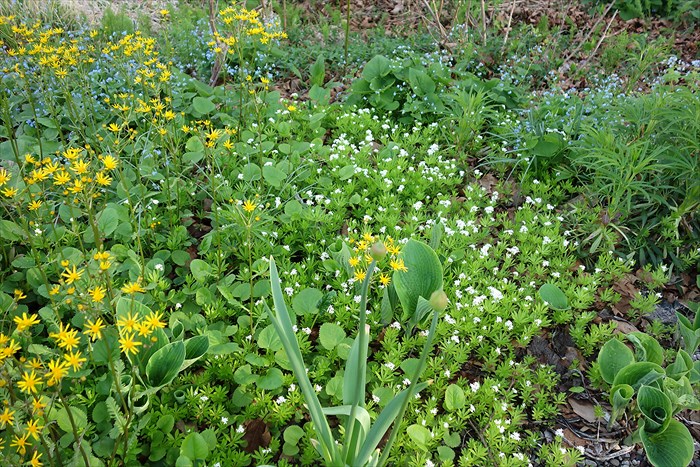 Down in the woodland garden is more Packera aurea and Ostrich fern (Matteuccia struthiopteris). I encourage both to spread.
Down in the woodland garden is more Packera aurea and Ostrich fern (Matteuccia struthiopteris). I encourage both to spread.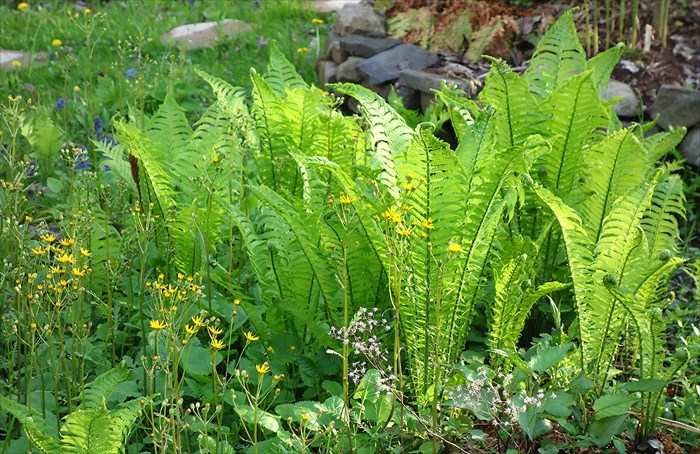 A colony of native Bracken has colonized this part of the garden. I used to read this plant is horribly invasive, to be avoided at all costs. But in my heavy clay, it's easily controlled. It's become one of my favorite plantings--a great mass of geometric form and texture, becoming like an ocean swell of angular fronds in summer, and gold in autumn.
A colony of native Bracken has colonized this part of the garden. I used to read this plant is horribly invasive, to be avoided at all costs. But in my heavy clay, it's easily controlled. It's become one of my favorite plantings--a great mass of geometric form and texture, becoming like an ocean swell of angular fronds in summer, and gold in autumn.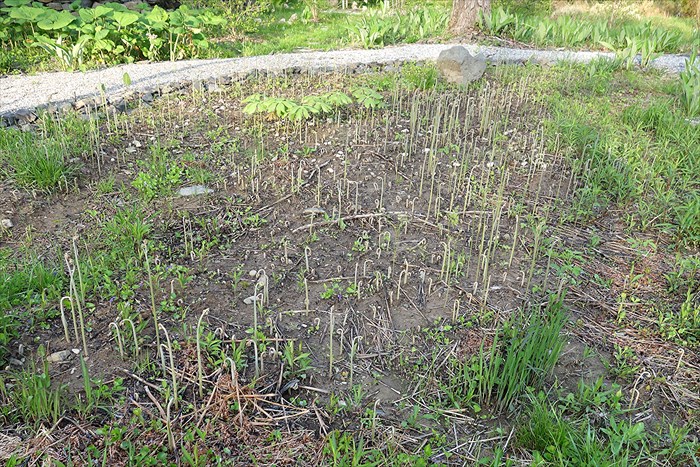 The old crab apple, planted in 1965, is still going strong. It's one of the earliest plants to flower in the garden.
The old crab apple, planted in 1965, is still going strong. It's one of the earliest plants to flower in the garden.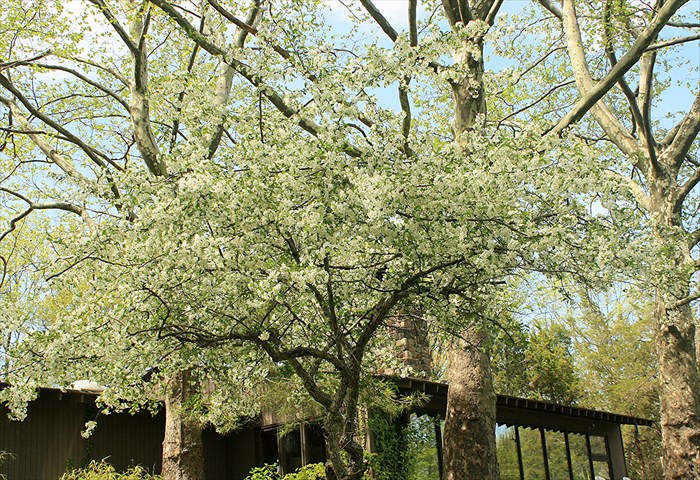
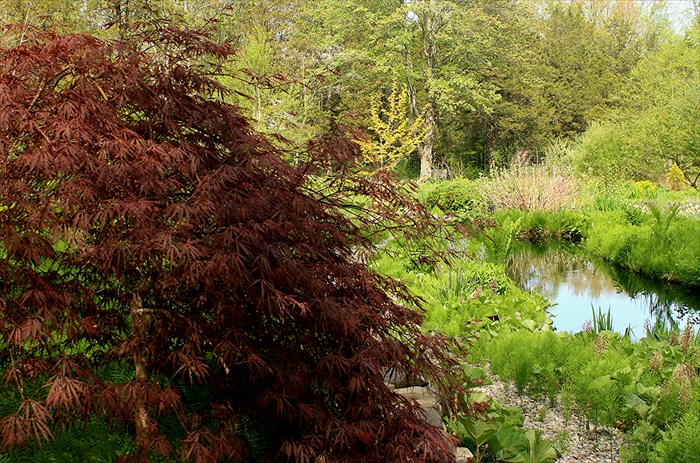
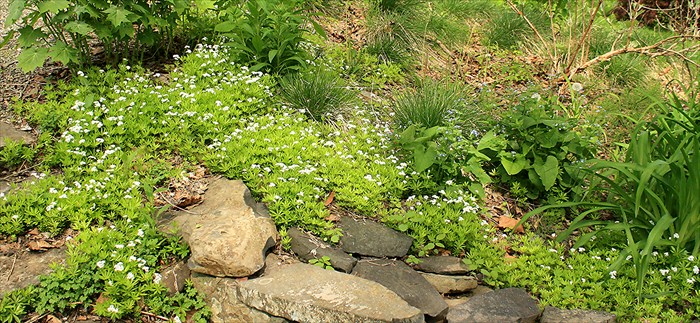 Nearing sunset, the garden edge becomes invisible and blends into the woods. This is a transitory garden; it would quickly disappear with a few years of neglect.
Nearing sunset, the garden edge becomes invisible and blends into the woods. This is a transitory garden; it would quickly disappear with a few years of neglect.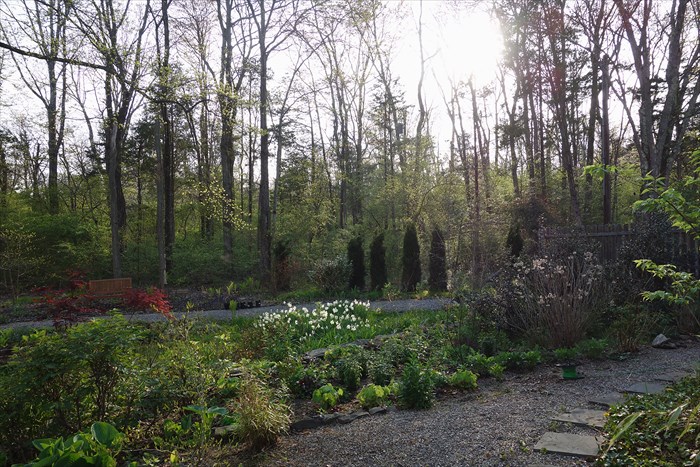
...... so ......
A glimpse of July ...
